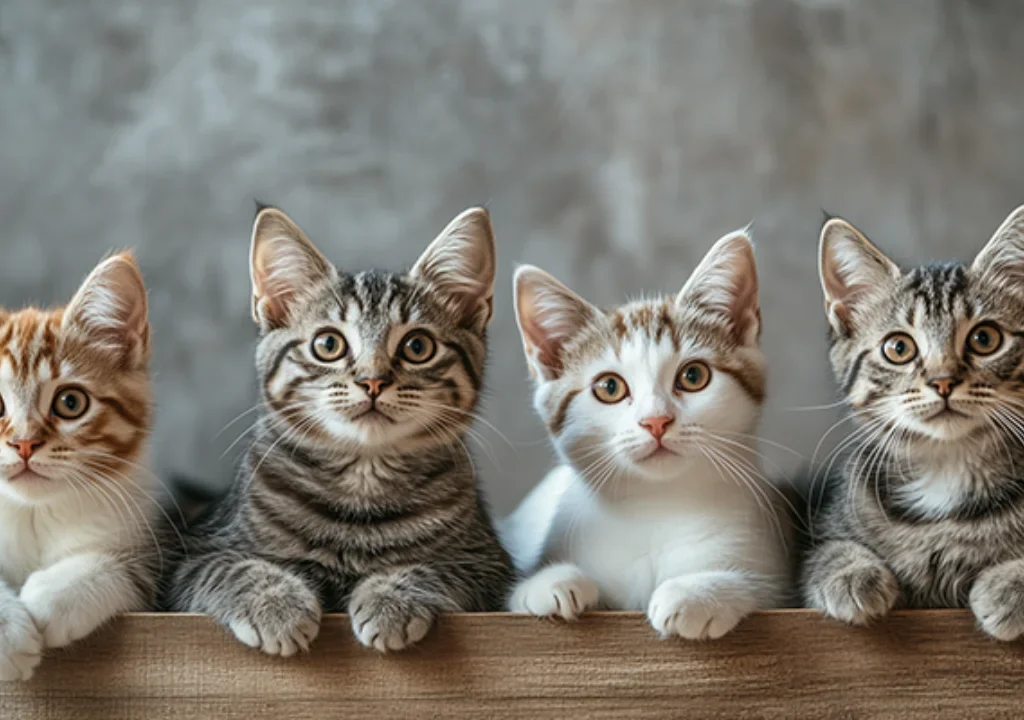
Cats have captivated humans for thousands of years with their mysterious behaviors, incredible abilities, and unique personalities. If you’re a cat lover or just curious about these fascinating creatures, here are some interesting facts on cats that will surprise you and deepen your appreciation for these furry friends.
Physical and Sensory Abilities of Cats
Cats possess remarkable physical and sensory powers that make them excellent hunters and agile animals.
- Jumping Power: Cats can jump up to six times their own height. This astonishing skill helps them catch prey and escape dangers with ease.
- Night Vision: Cats have exceptional night vision, seeing in light levels six times lower than humans. This allows them to navigate and hunt effectively in dim light.
- Super Hearing: With 32 muscles in each ear, cats can independently rotate their ears to pinpoint the exact location of sounds.
- Flexible Anatomy: Cats have 230 bones, including those in their tails and spine, which contribute to their graceful and agile movements.
- Taste Sensitivity: Unlike humans, cats cannot taste sweetness, as they lack the receptor for it.
- Whiskers as Navigational Tools: Whiskers detect subtle changes in air currents, helping cats navigate tight spaces and darkness.
- Toe Count: Most cats have 18 toes—five on each front paw and four on each back paw—providing balance and stealth.
Behavior and Social Life of Cats
Cats have complex social behaviors and habits that make them both independent and affectionate companions.
- Long Sleepers: Cats spend about 70% of their lives sleeping to conserve energy for hunting and playing.
- Self-Groomers: Cats groom themselves meticulously, which keeps their fur clean and helps regulate their body temperature. They also enjoy being groomed by their trusted owners.
- Unique Communication: Cats primarily meow to communicate with humans rather than other cats. Their purring can indicate contentment, anxiety, or even healing processes.
- Clever Minds: Cats are intelligent animals capable of learning tricks, solving puzzles, and remembering routines.
- Dominant Paw: Like humans favor one hand, cats often have a preferred dominant paw.
- Social But Independent: While naturally solitary hunters, cats can be social and form strong bonds with humans and other pets.
History and Cultural Importance of Cats
Cats have a rich cultural history and have been revered by various civilizations.
- Ancient Egyptian Reverence: Cats were sacred animals in ancient Egypt, often mummified and mourned profoundly when lost.
- Feline Mayor: Stubbs, a cat, served as the honorary mayor of Talkeetna, Alaska, for 20 years, becoming a community icon.
- Space Pioneer Cat: Félicette became the first cat to go to space, contributing to early animal space exploration.
- Longest-Living Cat: Creme Puff holds the record as the oldest cat, living an extraordinary 38 years and 3 days.
- Richest Cat: Blackie inherited a fortune of £7 million, making him history’s wealthiest cat.
Other Fascinating Cat Facts
- Lactose Intolerance: Most adult cats cannot properly digest lactose and are lactose intolerant.
- Unique Nose Prints: Each cat has a unique nose print, similar to human fingerprints.
- Distinct Walking Style: Cats walk with both legs on one side of the body moving together, similar to camels and giraffes.
- Catnip Effects: Catnip triggers a euphoric reaction in many cats, leading to playful or relaxed behavior.
- Jumping Study: Purina research shows cats can jump up to five times their height, showcasing their powerful muscles.
Frequently Asked Questions (FAQs)
Conclusion
Cats are amazing animals full of fascinating traits and rich history. Their impressive physical abilities, social behaviors, and cultural significance make them beloved companions worldwide. These interesting facts on cats showcase why cats continue to charm and inspire people across generations.

